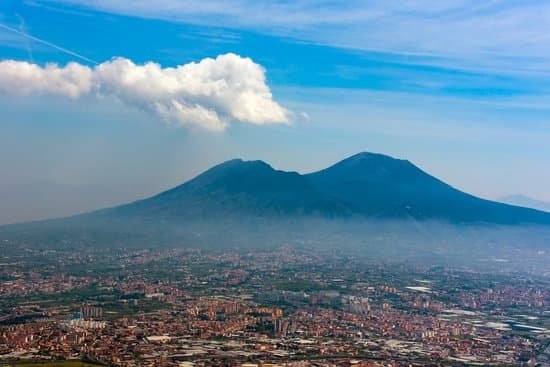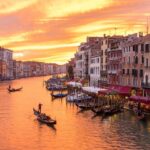Travelling to Italy as a professional photographer offers a wealth of opportunities to capture the rich culture, history, and stunning landscapes that make this country a top destination for photographers. From the iconic architecture of Rome to the picturesque streets of Florence, there is no shortage of captivating subject matter for photography.
In this article, we will explore the appeal of Italy for professional photographers and provide valuable tips for planning your trip, capturing must-visit photography locations, and connecting with local photographers.
Italy is a treasure trove of photographic inspiration, with its vibrant cities, charming villages, and breathtaking natural scenery. The appeal lies in the diverse range of subjects that cater to different styles of photography – from street photography in bustling urban centers to landscape photography in the rolling hills of Tuscany. As a professional photographer, the opportunity to immerse yourself in Italy’s beauty and culture can be both professionally fulfilling and personally enriching.
Whether you are planning your first trip to Italy or looking to enhance your existing portfolio with Italian imagery, it is essential to carefully plan your trip to make the most of your photography experience. This includes researching the best locations for photography, securing necessary permits and permissions for specific areas, and packing the right equipment for different types of photography.
In the following sections, we will delve into these aspects and provide valuable insights on how to make the most out of your journey as a professional photographer in Italy.
Planning Your Trip
Researching the Best Locations
When planning a trip to Italy as a professional photographer, it’s essential to research the best locations for photography. Italy is filled with iconic landmarks, historical sites, and stunning landscapes that offer endless opportunities for capturing beautiful images.
From the ancient ruins of Rome to the rolling hills of Tuscany, each region has its own unique charm and photographic appeal. By thoroughly researching different areas and their photographic potential, photographers can ensure they make the most of their time in Italy.
Securing Permits and Permissions
In some cases, photographers may need to obtain permits or permissions to photograph in certain locations in Italy. This is particularly true for commercial photography or when shooting in sensitive areas such as historic sites or private properties. It’s important to contact the appropriate authorities or property owners well in advance to secure the necessary permits and permissions. Failure to do so could result in legal issues and hinder a photographer’s ability to capture specific scenes.
Packing the Right Equipment
The type of photography equipment needed for a trip to Italy will depend on the specific interests of the photographer. For landscape photography, wide angle lenses and sturdy tripods are essential for capturing sweeping vistas and scenic countryside.
For street photography in bustling cities like Rome and Florence, a fast prime lens may be more suitable for capturing candid moments. No matter the style of photography, it’s crucial that photographers pack lightweight gear that is versatile enough to handle different shooting conditions while still adhering to airline luggage restrictions.
Must-Visit Photography Locations in Italy
Rome: Capturing the iconic architecture and historical landmarks
Rome is a city that offers an abundance of photographic opportunities, from the ancient ruins of the Colosseum to the grandeur of St. Peter’s Basilica. The key to capturing the essence of Rome is to wander through its cobblestone streets and narrow alleys, where you will stumble upon hidden gems waiting to be photographed. The golden hours of sunrise and sunset are ideal for capturing the warm glow of the city’s timeless architecture.
Florence: Photographing the stunning Renaissance art and picturesque streets
Florence is a haven for photographers seeking to capture the beauty of Italian Renaissance art, with masterpieces such as Michelangelo’s David and Botticelli’s Birth of Venus on display in its world-renowned museums. Wander through Florence’s charming streets lined with pastel-colored buildings and artisan workshops, and you’ll find endless opportunities for street photography. Don’t miss out on climbing to Piazzale Michelangelo for sweeping panoramic views of Florence.
Venice: Capturing the unique beauty of the canals and gondolas
Venice is a photographer’s dream, with its labyrinthine canals, ornate bridges, and elegant gondolas gliding through the waterways. To capture Venice at its most magical, take advantage of early morning light when the city is shrouded in mist or photograph it at night when its historic buildings are illuminated by soft lights.
As you wander through Venice’s winding streets, keep an eye out for charming details like colorful laundry hanging from windows or locals going about their daily routines.
Tuscany: Exploring the scenic countryside and vineyards for landscape photography
Tuscany’s rolling hills dotted with cypress trees, medieval hilltop towns, and sun-kissed vineyards offer countless opportunities for captivating landscape photography. The Val d’Orcia region in southern Tuscany is particularly picturesque, with its gently undulating hills and vibrant green fields punctuated by rustic farmhouses and winding roads. To capture Tuscany’s timeless beauty, plan your shoot during sunrise or late afternoon when the warm light bathes its countryside in a golden glow.
Photography Tips & Techniques
As a professional photographer traveling to Italy, it’s important to make the most of the stunning landscapes and historical landmarks the country has to offer. To ensure that your photography stands out, consider implementing the following tips and techniques:
- Utilizing natural light: Italy is known for its beautiful natural light, so take advantage of this when capturing your photos. Whether you’re shooting portraits in the golden hour or landscapes at sunrise, pay attention to how the light enhances your images.
- Using the rule of thirds: To compose dynamic and visually appealing shots, apply the rule of thirds. This involves aligning key elements along imaginary lines that divide your frame into thirds horizontally and vertically.
- Experimenting with different angles and perspectives: Don’t be afraid to get creative with your compositions. Try shooting from high vantage points, getting up close for detailed shots, or utilizing reflections and leading lines to add interest to your photos.
By incorporating these tips into your photography practices while in Italy, you can elevate the quality of your images and capture the beauty of the country in a unique and captivating way.
Remember that each location will present different lighting conditions and architectural details to work with – adapting your techniques accordingly will help you create a diverse portfolio that truly showcases the essence of Italy. Whether it’s silhouetting ancient landmarks against vivid sunsets or finding new perspectives on centuries-old art pieces, embracing these factors will vastly enrich both your experience and visual storytelling capabilities as a photographer during your time in Italy.
Connecting with Local Photographers
Italy is a country with a rich and vibrant photography community, and connecting with local photographers can greatly enhance your experience as a professional photographer visiting the country. Networking with local photographers not only provides you with insider tips and recommendations for great photography locations, but it also allows you to gain a deeper understanding of Italian culture and landscapes. Collaborating on photography projects with local photographers can also offer unique perspectives and insights that may have been otherwise overlooked.
One of the best ways to connect with local photographers in Italy is through social media and online forums dedicated to photography. Platforms such as Instagram, Facebook, and photography forums often have active communities of Italian photographers who are passionate about sharing their knowledge and experiences with others. Engaging with these communities through likes, comments, and direct messages can lead to valuable connections that may even result in future collaboration opportunities or mutual support.
Another way to connect with local photographers in Italy is by attending photography meetups, workshops, or exhibitions in the cities you plan to visit. These events provide an excellent opportunity to interact face-to-face with Italian photographers, exchange ideas, techniques, and potentially collaborate on projects. Building relationships with local photographers not only expands your professional network but also opens doors for potential future opportunities within the Italian photography industry.
| Heading | Information |
|---|---|
| Ways to Connect | Social media platforms (Instagram, Facebook)Photography meetups, workshops or exhibitionsOnline forums dedicated to photography |
| Benefits | Gain insider tips and recommendationsDeeper understanding of Italian cultureCollaboration opportunitiesPotential future opportunities within the Italian photography industryExpand professional network |
Editing & Showcasing Your Italian Photography
Italy is a country known for its breathtaking landscapes, rich history, and stunning architecture, making it a top destination for professional photographers. Once you have captured the beauty of Italy through your lens, it’s important to showcase your photography in a way that does justice to the captivating scenes you have captured.
Using post-processing techniques will allow you to enhance your photos and bring out the vibrant colors and intricate details of your Italian photography. Whether it’s adjusting the exposure, contrast, or color saturation, post-processing can help bring your images to life and evoke the true essence of Italy.
Creating a portfolio of your Italian photography is essential for showcasing your work online and in print. By curating a collection of your best images from different locations in Italy, you can demonstrate the diverse range of landscapes and subjects you have captured. This portfolio can be shared with potential clients, galleries, or used for personal promotion as a professional photographer.
Sharing your experiences and insights from travelling to Italy as a professional photographer not only allows others to appreciate the beauty of the country through your eyes but also provides valuable context to your work. Whether through social media posts, blog articles, or photography exhibitions, sharing the stories behind your Italian photos can further engage viewers and create a deeper connection with your audience.
| Post-Processing Techniques | Showcasing Your Photography |
|---|---|
| Adjusting exposure, contrast, color saturation | Curating a collection of best images |
| Enhancing vibrant colors and intricate details | Creating a portfolio for online & print presentation |
| Evoke true essence of Italian scenes | Sharing experiences & insights through social media etc. |
Overcoming Challenges
Travelling to Italy as a professional photographer can be an incredibly rewarding experience, but it also comes with its own set of challenges. From language barriers to unpredictable weather, navigating these obstacles is essential for capturing stunning images and making the most of your trip.
When photographing in Italy, it’s important to be prepared for potential language barriers and cultural differences. While English is widely spoken in tourist areas, learning some basic Italian phrases can go a long way in establishing rapport with locals and gaining access to unique photography opportunities.
Additionally, photographers must be adaptable when facing unpredictable weather and lighting conditions. Italy’s Mediterranean climate can bring sudden changes in weather, so it’s crucial to be flexible and patient when waiting for the perfect lighting or dealing with unexpected rain showers.
Navigating popular tourist destinations in Italy can also present a challenge for professional photographers. Managing crowds and finding unique vantage points can be difficult, but with careful planning and patience, it’s possible to capture original and compelling images that stand out from the typical tourist snapshots.
Overall, overcoming these challenges while photographing in Italy requires resilience, adaptability, and a willingness to embrace the unexpected. By preparing for language barriers, being flexible with weather conditions, and navigating crowded tourist sites strategically, photographers can make the most of their Italian experiences and capture truly unforgettable images.
- Learn basic Italian phrases
- Be flexible and patient with weather changes
- Navigate crowded areas strategically
Conclusion
Travelling to Italy as a professional photographer offers a plethora of opportunities to capture the rich culture, history, and stunning landscapes that make this country a top destination for photographers. From iconic landmarks in Rome to the picturesque streets of Florence, there’s no shortage of inspiration for creating memorable images. The experiences gained from exploring Italy and connecting with local photographers can help expand one’s portfolio and provide unique perspectives that may not be found in other settings.
As with any venture, there are challenges to overcome while photographing in Italy, such as language barriers and unpredictable weather conditions. However, these obstacles can also present opportunities for growth and creativity. Navigating crowded tourist destinations to capture original and compelling images requires patience and adaptability, which are essential skills for any professional photographer.
In conclusion, travelling to Italy as a professional photographer is an enriching experience that offers the chance to showcase the beauty of this remarkable country through photography. The insights gained from networking with local photographers and collaborating on projects can provide a deeper understanding of Italian culture and landscapes. By editing and showcasing your work, you can share your experiences with others and inspire fellow photographers to explore the captivating possibilities that Italy has to offer.
Frequently Asked Questions
Can you travel while being a photographer?
As a photographer, it is absolutely possible to travel while pursuing your craft. In fact, many photographers find inspiration and new subject matter while exploring different locations. Whether it’s for personal projects or client work, traveling can often enhance a photographer’s portfolio and skill set.
Can photographers travel the world?
Travel photographers have the unique opportunity to explore and capture the world through their lenses. They can visit different countries and cultures, immersing themselves in new environments while documenting their experiences through photography. Whether it’s for editorial assignments, commercial work, or personal projects, travel photographers have the ability to traverse the globe in pursuit of their passion.
Do travel photographers get paid to travel?
Yes, travel photographers can get paid to travel. Many travel photographers are hired by magazines, tourism boards, hotels, and other clients to capture images of various destinations. These opportunities often come with all expenses paid, plus additional compensation for their work.
Additionally, travel photographers may also sell their images as stock photography or license them for commercial use, generating income from their travels. Ultimately, professional travel photographers do have the potential to earn money while indulging their wanderlust.

I’m a passionate traveler, writer, and Italophile. My fascination with Italy’s history, art, and culture has led me on countless adventures across the Italian landscape. Through “I Live Italy,” I share my love for this extraordinary country and aims to inspire others to explore its boundless beauty.





